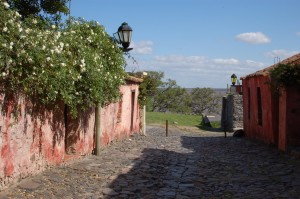So you want to become a travel writer?
 Becoming a travel writer isn’t easy, but some of the prerequisites are pretty simple to tick off. Do you love travelling? Do you regularly travel, or plan to start a new adventure soon? If the answer to those questions is “Yes, definitely!”, you’re off to a good start.
Becoming a travel writer isn’t easy, but some of the prerequisites are pretty simple to tick off. Do you love travelling? Do you regularly travel, or plan to start a new adventure soon? If the answer to those questions is “Yes, definitely!”, you’re off to a good start.
If you want to become a travel writer, you shouldn’t expect to get an article published right away. After all, this is the dream job and so competition is fierce. Editors often rely on just a few freelance writers that they commission time and time again.
Ever wish you had a good friend who was already established as a travel writer, and could show you the ropes and introduce you to the editors, press agents, and publishers you’d need to know to succeed?
How about if that good friend also happened to run one of the largest travel publishing companies—the very same companies you’ll need to pitch to launch your career? Sound like an unfair advantage? It is.
Unsurprising then that some of the most successful travel writers got their start studying with one of two organizations:
Matador Network is the world’s largest independent travel magazine, and the AWAI Travel Writing course is brought to you by the folks behind the uber-successful International Living magazine, where they publish a new in-depth travel article every single day. Both courses will teach you everything you need to know to launch your career as a travel writer. But more importantly, the contacts you make there will open doors to getting those all-important first published bylines. Once you have a few published pieces to your name, you’re officially a travel writer, and the world of press trips, writers’ organizations, and plum assignments from glossy travel magazines is within your reach.
Tools of the trade
If you’re serious about becoming a travel writer, you should probably invest in a small laptop or netbook to carry in your hand luggage. Insure it and keep a separate back-up of all your work!
Becoming a travel writer takes discipline. Don’t overestimate how much spare time you’ll have. Between planning your next steps, finding places to sleep and eat, booking coach tickets and making new friends, the time will disappear. Dedicate an hour or so each day to making notes, jotting down ideas for articles or recording memories that might come in useful.
The long road to stardom
Having a portfolio is very important. Editors will want to see samples of your work before they even consider your ideas. If you’re starting from scratch, a good idea is to write a blog. Make it look professional with online software such as WordPress, or sign up to a specialist site such as Travel Pod.
To be a freelance travel writer you have to be your own publicist. Get your friends and family to leave comments and hand out the link to fellow travellers. Use social media to try and get your blog noticed and if you’re lucky, it might get featured on a popular travel website.
Set yourself apart
What are the current trends in travel writing? What are travel magazines publishing articles about? You might think that a trek to Machu Picchu or diving on the Great Barrier Reef is pushing the boundaries, but to be a travel writer you’ll need to be more creative.
To get published and make money, you’ll have to write about places very few people have been. So if you’re not feeling intrepid, you’ll need to get a sense of adventure… fast!
Alternatively, is there anything that you have personal knowledge about? Maybe you know a lot about cooking, or used to work in the technology sector? Use your previous experience to focus on describing destinations from an alternative perspective, whether it’s a hundred ways to cook a sheep’s head in the Mongolian wilderness, or an African village’s novel approach to solar power.
A picture speaks a thousand words
Becoming a freelance travel writer isn’t just about being a word whiz. One thing many travel writers forget is the importance of great photos. Buy a decent SLR camera which comes with editing software. These days, a little bit of digital magic will make even the most amateur photographer’s shots look breathtaking.
Try to capture unusual imagery that will grab a reader’s attention and draw them into your article, and take every photo in both portrait and landscape so you can offer the commissioning editor both shots.
Curious to learn more? Keep exploring our website to find out how to break into freelance travel writing!

